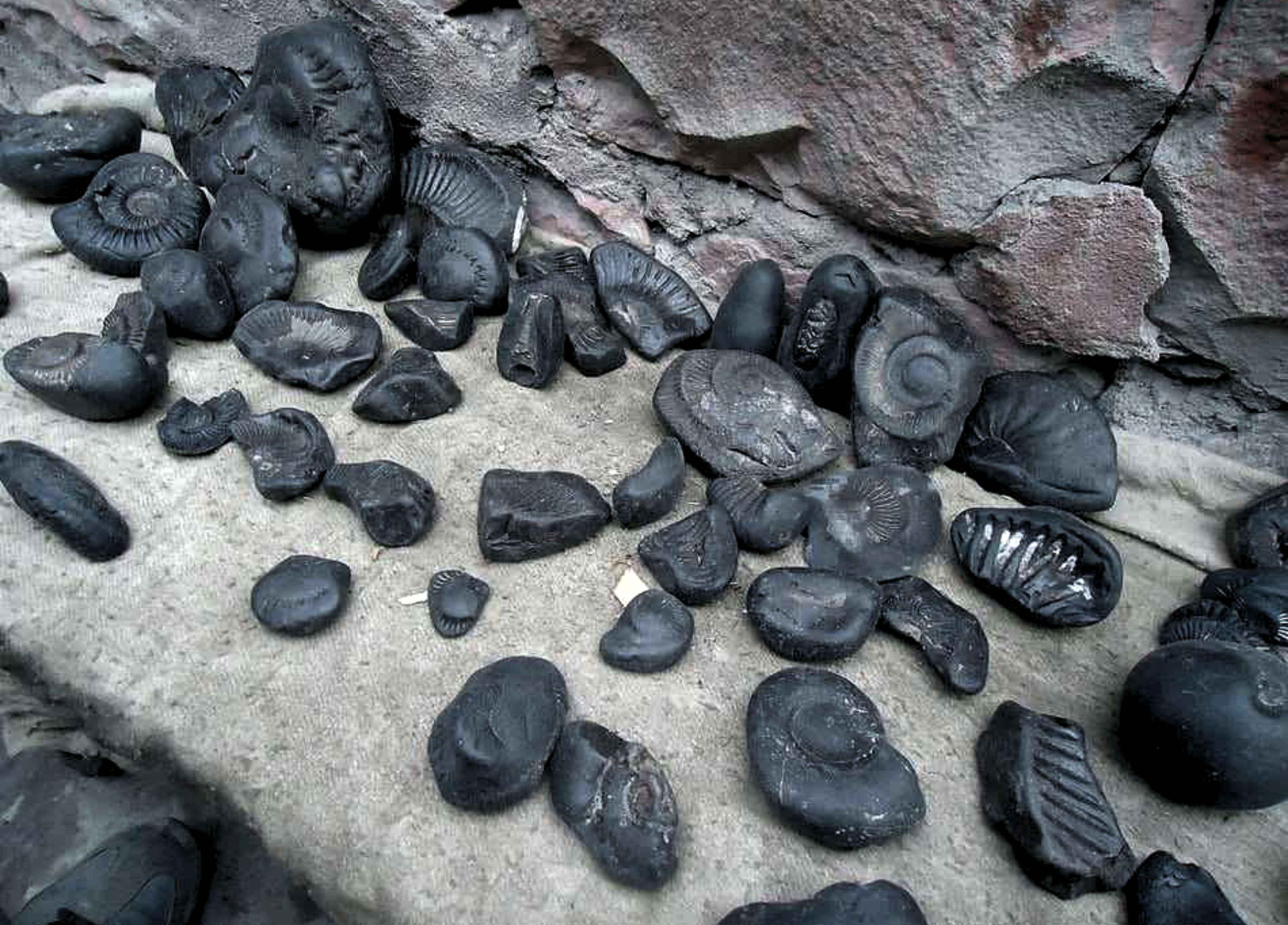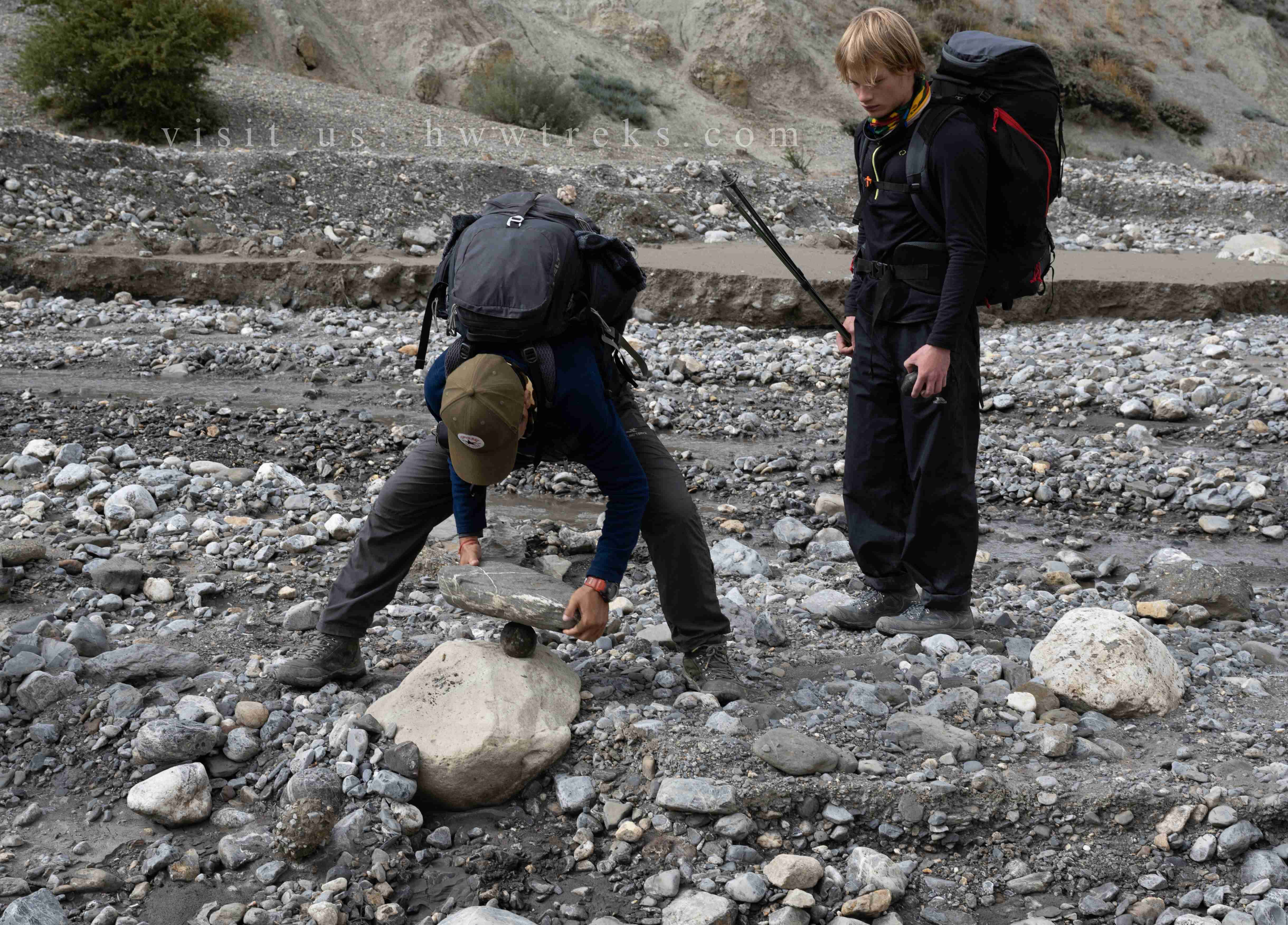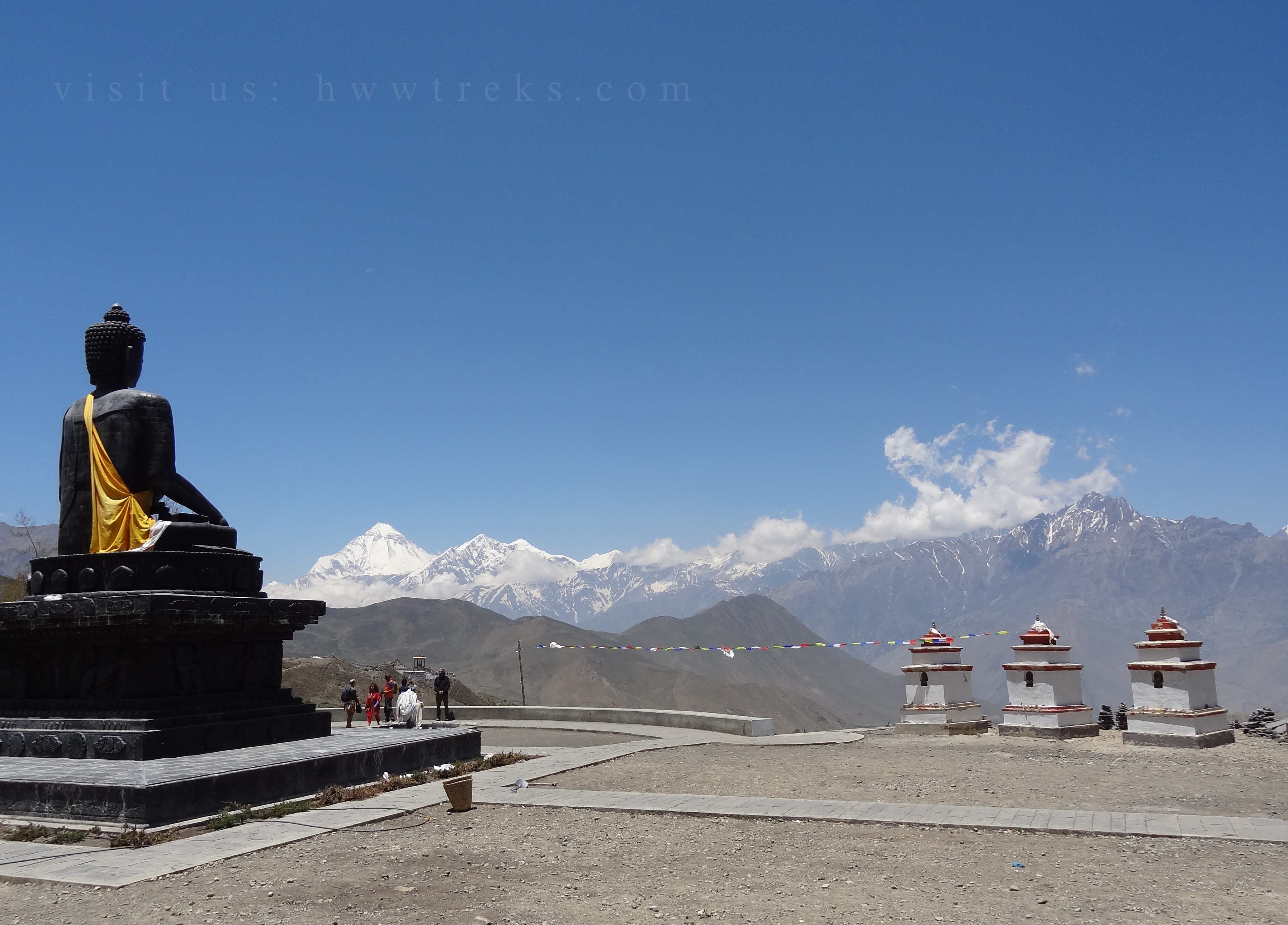- 10/24/2025
- Tags: mustang
- Yangchen Lhamo Gurung
Shaligram Shila (ammonite) of Mustang
Nepal, often regarded as the sacred land of gods and goddesses, is soaked in countless myths, legends, and spiritual stories passed down through generations. These are not just tales. They are often backed by tangible places and relics that continue to draw pilgrims and spiritual seekers from around the world. For example, the Muktinath Temple in Mustang is recognized by both Hindus and Buddhists. The Hindu people believe it to be the palace associated with Lord Vishnu, whereas Buddhists consider it one of the 24 holy places that hold great cosmic power in the world. Similarly, Lumbini is the birthplace of Lord Buddha, and the most sacred place among Hindus is the Gosainkunda lake of Langtang Valley, whose formation is associated with Lord Shiva and his trident.
Among these sacred sites, one of the most mystifying and spiritually significant elements is the Shaligram Shila, a rare black fossil stone found only in the Kali Gandaki River of Mustang. These sacred stones are revered as manifestations of Lord Vishnu himself and hold immense religious significance in Hinduism. Not only are they naturally formed without any human carving, but many even bear chakra (wheel) marks or resemble divine forms, believed to be living proof of divinity on earth.
Contents [hide]
Structure and Scientific History of Shaligram Shila

The Shaligram Shila is an ancient fossil of marine creatures known as ammonites, which lived millions of years ago when the Himalayas were underwater. These stones are typically black or dark brown and often have a spiral shape. Scientifically, they belong to the Cephalopoda class, and their fossil is known as the ammonite. Their unique natural patterns, often resembling chakras or symbols, are what give them a sacred appearance in religious belief.
The internal spiral design and glossy surface occur due to natural sedimentation and fossilization over time. No two Shaligrams are the same, and each is believed to carry its specific spiritual power depending on its shape and marks.
Note: The Shaligram Shila is only found in the Kali Gandaki River, which flows through the Mustang district of Nepal and merges into the Ganges River through the Narayani River. Nowhere else in the world are these sacred fossil stones naturally found, making Mustang a truly unique and spiritually rich region.
Legal and Cultural Protection

It is legal to search for Shaligram Shilas in the Kali Gandaki River. Most travelers and pilgrims dedicate a day to searching for the Shaligram Sila along the banks of the Kali Gandaki River. However, remember that removing, selling, or exporting them in large quantities without permission is strictly prohibited by Nepali law. In the past, locals used to openly sell them in Muktinath to pilgrims and tourists. But with time, and to preserve their sacred and cultural value, such practices have been restricted. Today, carrying a Shaligram across borders in bulk without proper documentation is not allowed.
This measure ensures that these sacred stones are respected and protected as part of Nepal’s cultural and spiritual heritage.
Religious Beliefs and Significance

In Hinduism, the Shaligram Shila is not just a stone. It is a living form of Lord Vishnu and is often kept in homes, temples, and even monasteries for daily worship. It is believed to bring protection, prosperity, and peace to those who keep it with devotion. Many Hindus use it for rituals, offerings, and prayers, especially in Vishnu-related traditions.
There’s an old story behind the Shaligram that’s still told in many parts of Nepal and India. It’s about Tulasi, who is believed to be a form of Goddess Lakshmi, and her husband, the demon king Shankhachuda. When Lord Vishnu had to end Shankhachuda’s life to restore cosmic balance, he took a disguise. But in doing so, he unintentionally broke Tulasi’s heart. Out of grief, she cursed him, saying he would turn cold and emotionless like a stone. Vishnu accepted the curse, and it’s said that he transformed into the Shaligram mountain near the Gandaki River. Over time, parts of the mountain rolled down into the river as dark, sacred stones now known as Shaligram Shilas. These stones often have mysterious spiral marks, which many say are carved by a celestial creature called Vajrakita in Hindu mythology, also known as “thunderbolt worm” in English, a mythic worm that was said to have teeth as strong as thunderbolts (vajra) and be able to bite a stone. They also say that Tulasi’s body became the Gandaki River itself, and from her hair, the holy tulsi plant grew, a plant now offered to Vishnu in prayer across the Hindu world
Interestingly, the Shaligram Shila also holds spiritual value in Buddhist culture. In certain Vajrayana Buddhist monasteries of Mustang, the stone is regarded as a symbol of purity and enlightenment. Some believe it represents the eternal nature of the Dharma and is often placed on altars alongside other sacred items. While some believe that the Shaligram found in the Kali Gandaki River is a boon left by Guru Rinpoche (Padmasambhava) during his journey from India to Tibet as a present to the land, it is also believed that the natural salt in the Mustang region was left by Guru Rinpoche for the locals. The shared respect between Hindu and Buddhist communities for this fossil symbolizes the spiritual unity of the region.
Identifying the original Shaligram Shila
There are many similar stones that resemble a Shaligram Shila in the market, having the same shapes and that natural chakra pattern. If one truly wants the original Shaligram stone and has time to personally look for it, then the best way to find the authentic Shaligram Shila is to visit the Kali Gandaki River and look for it there.
Even though one gets to the bank of Kali Gandaki for the stone, it would be tricky to find one in less time since there will be a lot of stones along with the wave of water creating that spiral design on every stone and pebble. One needs to have sharp eyesight and look for the stone with a black or dark brown color, with the natural chakra or lotus or spiral pattern. Normally, locals believe that looking for the Shaligram early in the morning when there was a tight flow of water in the night is far better and easier, as the high speed of water might have left the Shaligram stone at the bank of the river.
Conclusion
The Shaligram Shila is not just a fossil or a relic of the past. It is a living link between science, history, and deep spiritual belief. Found only in the sacred Kali Gandaki River of Mustang, this rare stone is worshipped, protected, and honored by both Hindus and Buddhists. Whether seen as a divine form of Vishnu or a symbol of ancient life on earth, the Shaligram Shila continues to inspire awe and devotion. It reminds us that faith, culture, and nature are often beautifully interconnected, especially in the sacred lands of Nepal.
Read similar useful blogs regarding travel to Upper Mustang from the below lists:
- Best Treks in Upper Mustang
- Why you should visit Upper Mustang
- When is the next Tiji Festival of Lo Manthang?
- What is the Tiji Festival?
- Villages of Upper Mustang
- Three Major Monasteries of Lo Manthang.
- Upper Mustang Trekking Guide
- Road Trip to Upper Mustang
- Bagcham of Namgyal Monastery
- Hotels in Mustang



